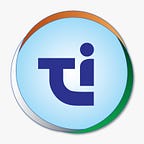Financial Literacy Programs In India
In recent years, financial literacy programs in India have gained significant momentum, driven by the realization that financial education is crucial for the economic well-being of individuals and the nation as a whole. These programs aim to equip people with the knowledge and skills required to make informed and effective financial decisions. As India continues its rapid economic development, the importance of such initiatives cannot be overstated.
Financial literacy programs in India target diverse segments of the population, including students, women, rural communities, and urban professionals. The Reserve Bank of India (RBI), along with various governmental and non-governmental organizations, has been at the forefront of promoting financial literacy. These initiatives are designed to demystify financial concepts and promote prudent financial behavior.
One of the significant strides in this direction has been the introduction of financial literacy camps in rural areas. These camps educate villagers about basic financial concepts such as savings, investments, insurance, and the importance of maintaining a bank account. Given that a large portion of India’s population resides in rural areas, these initiatives are crucial for bridging the gap between urban and rural financial literacy levels.
Schools and colleges across the country are also becoming active participants in financial literacy programs in India. Incorporating financial education into the curriculum helps young individuals develop a strong foundation in managing finances from an early age. Students are taught about budgeting, the importance of savings, understanding loans, and the basics of investing. Such early interventions are essential in fostering a financially responsible generation.
Women, particularly in rural areas, have been a focal point for many financial literacy initiatives. Empowering women with financial knowledge not only enhances their economic stability but also contributes to the overall development of their families and communities. Programs tailored for women often cover topics such as microfinance, self-help groups, and small business management, enabling them to become financially independent.
Technology has played a pivotal role in expanding the reach of financial literacy programs in India. Mobile applications, online courses, and interactive websites have made financial education accessible to a broader audience. These digital tools provide convenient and cost-effective means for individuals to learn at their own pace.
Despite the progress, challenges remain. A significant portion of the population still lacks access to formal financial education. Efforts must continue to ensure that financial literacy programs reach every corner of the country, and that they are tailored to meet the diverse needs of India’s population.
In conclusion, financial literacy programs in India are a vital component of the nation’s economic strategy. By fostering financial awareness and competence, these programs are paving the way for a financially secure and inclusive society. The continued collaboration between the government, financial institutions, and educational bodies will be essential in driving these initiatives forward, ensuring that every Indian has the opportunity to achieve financial well-being.
